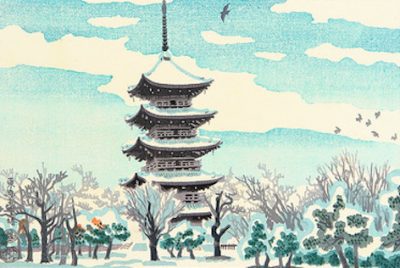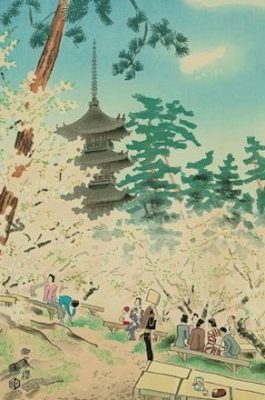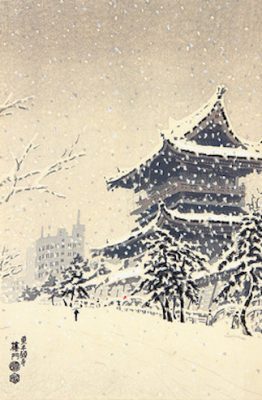Japan Art and Buddhism: Eiichi Kotozuka and Kyoto
Lee Jay Walker
Modern Tokyo Times

The esteemed artist Eiichi Kotozuka was born during the Meiji Period (1868-1912) in the Kansai region in 1906. He is noted for his sōsaku hanga (creative prints) prints – and all the prints in this article were published in the 1950s.
The British Museum says, “After training in Western art at the Shinano-hashi Yoga Kenkyujo, moved to Kyoto where he studied Nihonga and woodblock printmaking.”

It is easy to imagine how Kyoto, Koyasan, Nara, Negoro-Ji, and other places in the Kansai region inspired him. This concerns Buddhism, high culture, history, and other important areas of Japanese culture.
All three prints focus on Kyoto – and unbelievably Kotozuka produced these in the 1950s after the horrendous events of war.

The final print above is the Higashi Hongan-ji Temple in Kyoto.
This Buddhist temple belongs to the sect of Pure Land Buddhism (Jōdo Shinshū). Shinran (1173–1263) is the founder of this Buddhist sect.
Shinran said, “Awaken to the life nurturing Primal Vow of Amida; those who only entrust in this universal activity of love and compassion, through the benefit of being embraced and never forsaken, all attain Enlightenment.”

Modern Tokyo News is part of the Modern Tokyo Times group
http://moderntokyotimes.com Modern Tokyo Times – International News and Japan News
http://sawakoart.com – Sawako Utsumi’s website and Modern Tokyo Times artist
https://moderntokyonews.com Modern Tokyo News – Tokyo News and International News
PLEASE JOIN ON TWITTER
https://twitter.com/MTT_News Modern Tokyo Times
PLEASE JOIN ON FACEBOOK